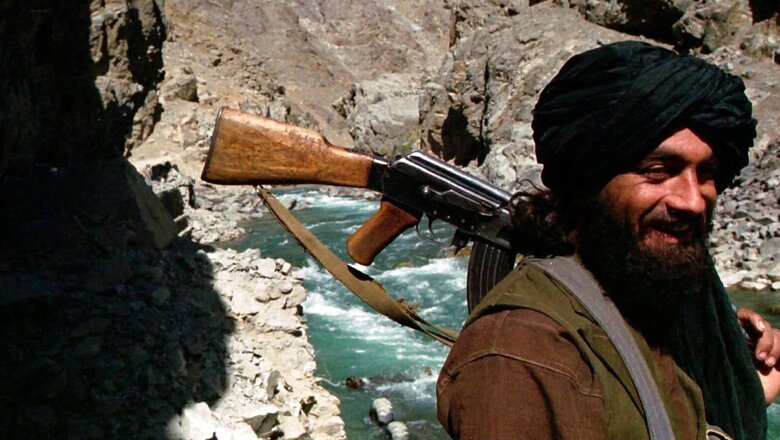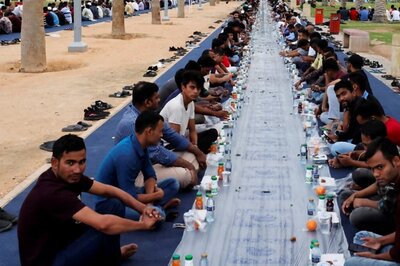
views
The Taliban has taken control of Afghanistan. But what now? In a country with a lengthy history of foreign conquest and internal struggle, understanding its roots becomes imperative to predicting what course the future might take.
As rivalling insurgent factions and neighbouring contries such as Pakistan start to stake a claim in the turmoil ongoing in the former gateway of Asia and Europe, News18 provides a brief history of Afghanistan, and the Taliban:
A Historical Melting Pot
Its geographic location has made Afghanistan a melting pot of cultures. The Persians, headed by Darius the Great (522-486 BCE), and the Greeks, led by Alexander the Great, were among those who settled in the country (356-323 BCE). There are several modern towns constructed on ancient Greek foundations. In Bamiyan, a Buddhist civilization thrived from the late 1st century CE until the 10th century CE, the New Internationalist reports.
In 699-700, an Arab attack on Kandahar introduced Islam, which grew in prominence as the Turks acquired control in Iran, Afghanistan, and India in the centuries that followed. In the 13th century, Genghis Khan, a Mongolian, attacked the country. Various Indian and Persian empires fought over Afghanistan for the following few hundred years. Durrani (aka Ahmad Shah Abdali) led a collection of Pashtun tribes to victory over the Moghuls and Persians in the 18th century, consolidating their own enormous but unstable kingdom.
From the ‘Great Game’ to Afghanistan’s Democratic Govt
During the “Great Game,” a rivalry between imperial Britain and tsarist Russia in the late 19th century, Afghanistan’s contemporary frontiers were created. Modern Afghanistan became a pawn in ideological and commercial power conflicts.
The last quarter of 20th century Afghanistan was devastated by civil conflict, compounded by the Soviet invasion and occupation (1979–89). The Taliban, a religious student movement that rose up against the country’s ruling parties and warlords and established a theocratic regime from 1996 to 2001, fell under the influence of a well-funded Islamist group in the 1990s.
An American-led military assault against the Taliban and al-Qaeda fighters led to the collapse of the Taliban rule in December 2001. Later, anti-Taliban forces agreed to a transitional administration and leadership that would lead to a new constitution and the installation of a democratically elected government.
The Saur Revolution – The Key to What is Happening Now
The Saur Revolution was a watershed moment in Afghanistan’s history. Afghanistan had been developing for decades by the mid-1970s. As far as building up Afghan infrastructure was concerned, the United States and the Soviet Union were particularly interested, as both countries hoped to gain a foothold in Afghanistan and use it as a base to assert dominance over central and south Asia, the Conversation says in a report.
Foreign funding made Afghanistan’s government the country’s largest employer, which led to widespread corruption, and eventually paved the way for the revolution.
Various philosophies were vying for supremacy in the country at that time. There was a group of mostly young activists, journalists, educators, and military commanders influenced by Marxism on the other end of the scale. There were also Islamists who aspired to establish an Islamic state in the style of the Muslim Brotherhood.
When Daud Khan was president, he sided with the youthful officers. Afraid of a revolution, he suppressed several groups. Khan was overthrown in April 1978 by a coup. Eventually, a Marxist-Leninist government took control of the People’s Republic of Afghanistan.
An early purge against members of the ruling communist party was followed by the suppression of Islamist and other opposition organisations, which resulted in the birthing of a fledgling rebellion.
Seeing an opening, the United States began funnelling money to Pakistani intelligence services, which were aligned with Islamists in Afghanistan.
United States first provided only a little amount of financial assistance and only made symbolic gestures of support. Ultimately, though, it allied with an Islamist organisation that was part of the mujahedeen, a loose coalition rather than a cohesive group. Apart from Islamist groups, there were also Marxist organisations that had been cleansed by the ruling government. There was just one thing they all had in common: they were all opposed to the government’s rising repression.
Hafizullah Amin, who took control after Nur Mohammad Taraki’s assassination in 1979, became a dictatorial leader, the report says. The Soviet Union invaded Afghanistan in 1979 because of worry that the United States would take advantage of the rising instability. U.S. poured more money into the mujahedeen, who were fighting a foreign foe right there on their own soil.
Over a period of several years, the mujahedeen waged a guerrilla struggle against Soviet forces, eventually exhausted the invaders both militarily and politically Because of this, as well as international pressure, the Soviet Union came to the table.
Chaos reigned in Afghanistan after the Soviets left in 1989. Over the course of three years, the new government fell and the previous mujahedeen commanders morphed into warlords, with different factions in different regions turning against one another.
Mullah Mohammad Omar, a former islamist mujahedeen commander, looked to Pakistan, where a generation of young Afghans had grown up in refugee camps, attending to various madrassas where they were taught in a rigorous Islamic philosophy known as Deobandi.
What became the Taliban gained its backing from these camps — “taliban” meaning “students”. Because most Taliban members are not mujahedeen, they ended up battling mujahedeen.
What Will Happen Now? Past Provides a Clue
The Taliban’s popularity was due in part to the fact that they presented an alternative, who were welcomed by some Afghan villages as a form of relief. Initially, the Taliban’s rhetoric of security and stability offered a viable alternative to the current state of turmoil In the next year, they implemented measures such as the prohibition of music and the limitation of women.
A swift Taliban takeover of Afghanistan after President Biden announced a troop pullout shocked many people. It’s clear, however, that they’re doing the same thing now as they did in the 1990s when the Taliban first emerged, the report argues, adding that the group is relying on localism as a technique to achieve their objectives.
The Taliban are currently promising the world that they will enable women to go to school and have rights. In the 1990s, they said the exact same thing. As in the 1990s, their promises are always accompanied by conditions. Last time they ruled, these promises were replaced with horrific brutality.
With inputs from Reuters
Read all the Latest News, Breaking News and Assembly Elections Live Updates here.



















Comments
0 comment